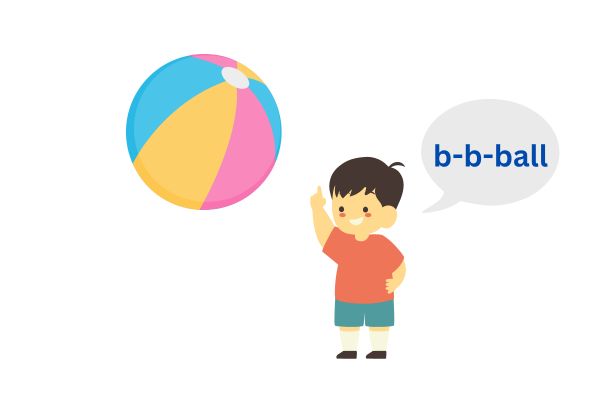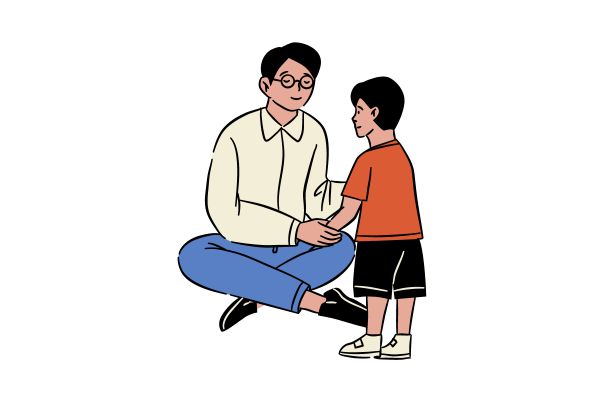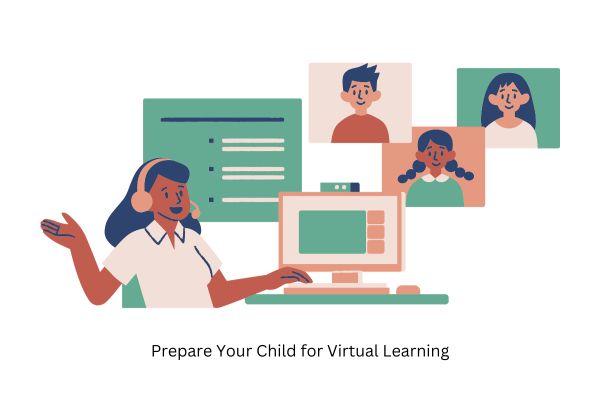Stuttering is a common speech disfluency that affects young children, often between the ages of 2 and 5. It can be an unsettling experience for parents and toddlers, filled with questions and concerns. Understanding how to manage stuttering effectively is crucial in supporting your child’s communication development and emotional well-being. This guide help you with knowledge and practical strategies to navigate this journey.
What is Stuttering?

Stuttering also known as stammering is a speech disorder characterized by disruptions in the natural flow of speech. These disruptions manifest through:
- Repetitions: Sounds, syllables, or words are repeated involuntarily (e.g., “b-b-ball”).
- Prolongations: Sounds are stretched out in length (e.g., “sssssnake”).
- Blocks: Speech flow is interrupted by silent pauses or difficulty starting words.
It’s important to distinguish stuttering from normal disfluencies that everyone experiences sometimes, like hesitations or occasional repetitions. These are natural parts of language development and usually don’t interfere with communication.
Types of Stuttering
- Developmental stuttering: The most common type, starting in childhood and potentially persisting into adulthood.
- Acquired stuttering: Starts later in life, often due to neurological events, head injuries, or psychological trauma.
- Neurogenic stuttering: A more severe type caused by neurological conditions.
Why does it happen?
The exact cause of stuttering is unknown, but various factors are believed to contribute:
- Neurolinguistic factors: Differences in brain development and processing of language information.
- Genetics: A family history of stuttering increases the risk.
- Temperament: Certain personality traits like anxiety or sensitivity may predispose someone to stuttering.
- Communication demands: Pressure to speak quickly or under pressure can worsen stuttering.
Is it serious?
Most young children (70-80%) naturally “outgrow” stuttering within a few years. However, early intervention can enhance fluency and prevent negative emotional impact.
Recognizing the Signs
- Repetitions: Sounds, syllables, or words may be repeated (e.g., “b-b-ball”).
- Prolongations: Sounds are stretched out (e.g., “ssssnake”).
- Blocks: Speech flow is interrupted with silence or difficulty starting words.
- Secondary behaviors: Tight facial muscles, gestures, or avoidance of certain sounds or situations.
When to Seek Help
- Stuttering persists for more than 6 months.
- Severity increases or interferes with communication.
- Secondary behaviors develop.
- You or your child feels anxious or frustrated about stuttering.
Supporting Your Child

Communication Strategies
- Create a relaxed environment: Minimize distractions, allow ample time for speaking, and maintain calm interactions.
- Active listening: Focus on your child’s message, not their speech disfluencies. Make eye contact and nod encouragingly.
- Slow down your speech: This models relaxed pacing and reduces pressure on your child.
- Ask open-ended questions: Encourage longer responses instead of yes/no answers.
- Avoid completing sentences: Give your child time to express themselves fully.
- Reduce pressure to perform: Avoid putting your child on the spot in social situations.
- Focus on strengths: Praise their unique qualities and accomplishments, not just their fluency.
Additional Resources
- Speech-Language Pathology (SLP): An SLP can diagnose stuttering, create personalized therapy plans, and guide communication strategies.
- Support Groups: Connecting with other parents navigating similar experiences can offer valuable information and emotional support.
- Children’s Books: Age-appropriate books can normalize stuttering and help children understand their communication.
Beyond Communication
- Emotional Support: Acknowledge your child’s feelings and frustrations. Open communication and reassurance can make a significant difference.
- Self-Esteem: Help your child build confidence in other areas. Encourage activities and interests they excel in.
- Role Models: Share stories of successful individuals who stutter, like actors or athletes.
Remember
- You are not alone.
- Stuttering is manageable with the right support.
- Early intervention can make a positive difference.
- Focus on fostering communication and building your child’s confidence.
- Celebrate every step in their journey, big or small.
Disclaimer
This information is intended for general knowledge and does not constitute professional medical advice. Always consult a healthcare professional or speech-language pathologist for personalized guidance regarding your child’s specific needs.





